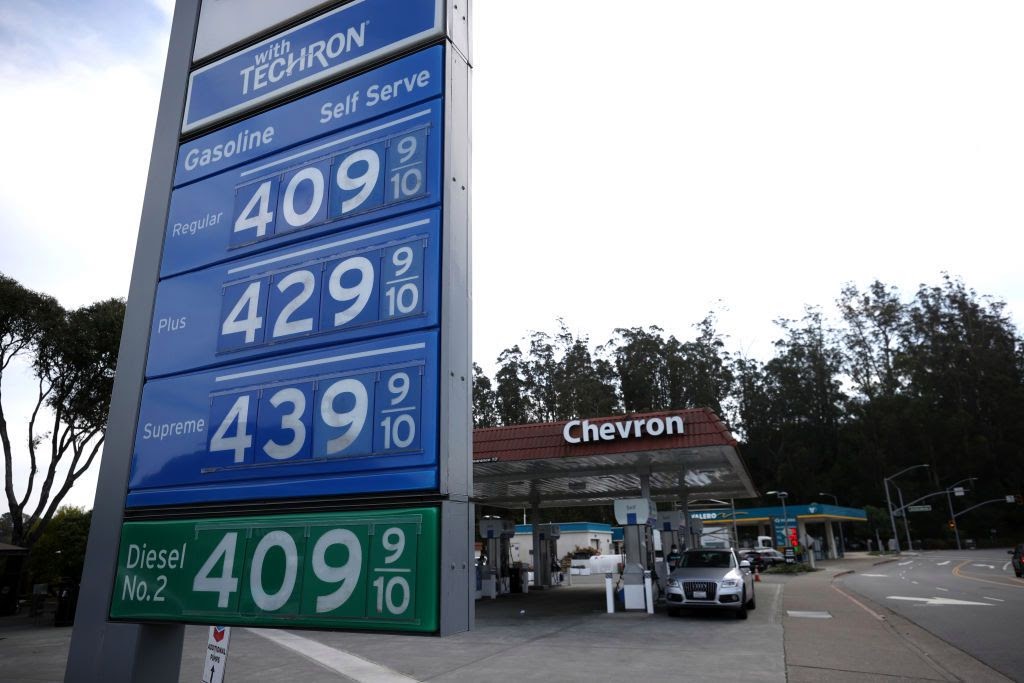Gas Prices Soar Across the Country: Who’s to Blame?

MILL VALLEY, CALIFORNIA - MARCH 03: Gas prices over $4.00 a gallon are displayed at a Chevron gas station on March 03, 2021 in Mill Valley, California. Gas prices have increased across the United States to a national average of $2.72 per gallon, an increase of 30 cents from one month ago. Gas in California has an average price of $3.68 per gallon, the highest in the nation. (Photo by Justin Sullivan/Getty Images)
Image Courtesy of WGN-TV
By Jeremy Perillo
Across the United States, consumers are noticing that gas prices are rising. Gas prices in North Carolina have reached levels that are the most expensive since April 2019, and more nationally, gas prices could reach $3 per gallon this spring.
But why? Why the sharp increase in gas prices across the country? Many individuals, for years, have blamed the president and his actions for rising prices. It’s a cyclical phenomenon that occurs when gas prices inevitably spike. Given the new administration, many have taken to blogs, social media, and some news articles, to blast the new administration’s policies as causing the price surge.
Forbes senior energy contributor, Robert Rapier, laid out three causes for the recent surge in prices, none of which relate to the president. He prefaced his article with an important point: it’s not that Biden’s policies cannot affect gas markets, it’s that they have not had enough time to, and the factors currently affecting the market are unrelated to him.
The first factor is rising oil prices. Rapier states that the single largest factor influencing gasoline prices is almost always changes in the price of oil, which has been increasing over the past couple of months. Demand collapsed a year ago at the start of the pandemic as people stopped traveling and remained at home. As the vaccines are distributed, states open up, and people begin traveling again, oil demand is going to increase, thus putting pressure on prices. The other contributor to oil prices are actions by groups like OPEC who hold huge power in determining the increase or decrease in oil prices.
The second factor is a loss of refining capacity. When an event occurs that limits the ability for oil to be refined, gasoline supplies begin to run low. The winter weather event in Texas that left millions without power caused a significant loss in refining capacity, causing gasoline prices to rise.
“During the first two weeks of February, refinery utilization in the U.S. was at 83%, then the winter storm negatively impacted about a dozen refineries in Texas,” Rapier said. “By the last week of February, refinery utilization had plunged to 56%.”
The third factor is the transition to summer gasoline. Gas used in the winter is cheaper to produce, but the “summer blend” is more costly, which gets passed on to consumers. Considering the gigantic increase in traveling that will likely occur over the summer, gasoline companies are no doubt going to be rebounding from their losses over the past year.
Of course, there are instances where a president could affect gas prices, however, that would mostly be in the long term. A president could increase the gas tax, which currently accounts for about 21% of the cost of gasoline, which would then raise the cost of gasoline. For the long term, there are implications a president could have on gas prices. Biden’s decision to stop the Keystone XL Pipeline could have a long-term effect on gas prices, but it’s too soon to tell.
The blaming of presidents for gas prices has been occurring for decades. Let’s go back to 2012 when Barack Obama was in the waning months leading up to the 2012 presidential election. Republican leadership and presidential candidates were calling out the president for blisteringly high gas rates. This targeted approach against Obama ignored the wider issue. At the time, there was a high demand in Japan and China for oil, meanwhile, supplies from Sudan and Yemen had been disrupted.
It’s a bipartisan issue too. Obama falsely blamed George Bush for high gas prices in 2008. During a campaign speech, Obama said “here in Ohio, you’re paying nearly $3.70 a gallon for gas – 2.5 times what it cost when President Bush took office.”
As consumers and citizens, it is important to understand the whole picture. In a deeply interconnected world, where incomprehensible amounts of information are available at our fingertips, we must remain vigilant in staying informed. It is surely our responsibility to hold our elected officials accountable, but overtly blaming them for nonfactual biases spreads disinformation and provokes polarization.






